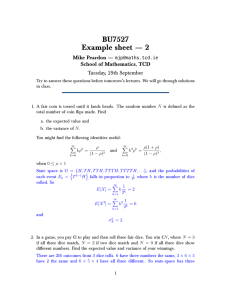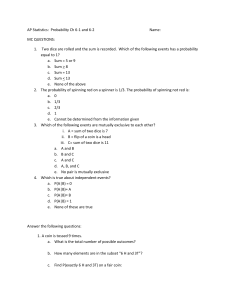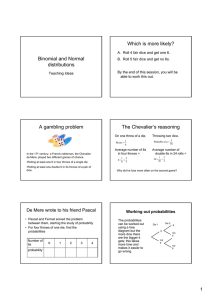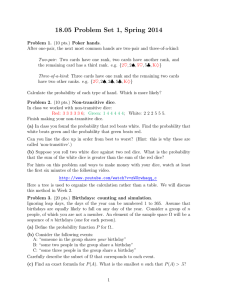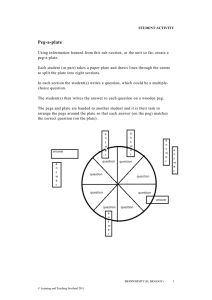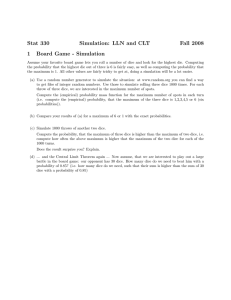BU7527 Example sheet — 2 Mike Peardon — School of Mathematics, TCD
advertisement
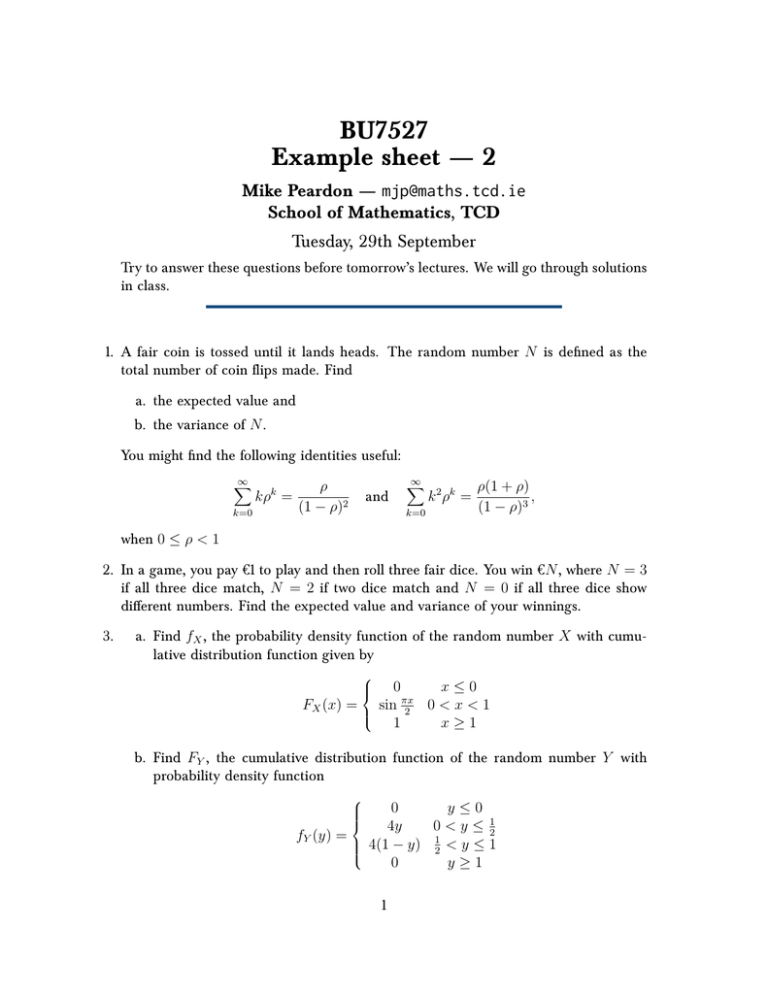
BU7527 Example sheet — 2 Mike Peardon — mjp@maths.tcd.ie School of Mathematics, TCD Tuesday, 29th September Try to answer these questions before tomorrow’s lectures. We will go through solutions in class. 1. A fair coin is tossed until it lands heads. The random number N is defined as the total number of coin flips made. Find a. the expected value and b. the variance of N . You might find the following identities useful: ∞ X k=0 kρk = ρ (1 − ρ)2 and ∞ X k=0 k 2 ρk = ρ(1 + ρ) , (1 − ρ)3 when 0 ≤ ρ < 1 2. In a game, you pay €1 to play and then roll three fair dice. You win €N , where N = 3 if all three dice match, N = 2 if two dice match and N = 0 if all three dice show different numbers. Find the expected value and variance of your winnings. 3. a. Find fX , the probability density function of the random number X with cumulative distribution function given by 0 x≤0 πx FX (x) = sin 2 0 < x < 1 1 x≥1 b. Find FY , the cumulative distribution function of the random number Y with probability density function fY (y) = 0 y≤0 4y 0 < y ≤ 12 4(1 − y) 12 < y ≤ 1 0 y≥1 1 4. Two random numbers X and Y are both in the range [0, 1] and have a joint pdf given by 7 fX,Y (x, y) = − (x − y)2 6 Find the probability density function of X alone. 5. Two random numbers X and Y have a probability distribution given by ( fX,Y (x, y) = k 0 if x2 + y 2 ≤ 1 otherwise where k is an unknown constant. Are X and Y independent? Find k and then find the probability P (X 2 + Y 2 < 14 ). 2
